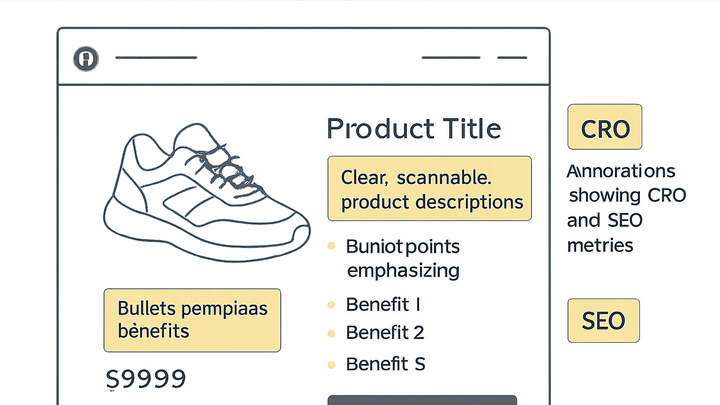Published on 2025-06-29T21:13:59Z
What Is Product Description Clarity? Examples and Best Practices
Product Description Clarity refers to how clearly and effectively a product’s features, benefits, and usage are communicated to potential customers. In the context of CRO, UX, and SEO, clear descriptions guide user decisions, improve search visibility, and reduce bounce rates. Ambiguous or overly technical language can confuse prospects, dilute your value proposition, and hinder conversions. By crafting concise, benefit-driven copy, you help buyers understand exactly what they’re getting and why it matters. Tools like Prevue.me offer actionable critiques on phrasing, structure, keyword placement, and accessibility to maximize lead generation. Ultimately, high clarity fosters trust, engages users, and drives measurable growth.
Product description clarity
Clear, concise product descriptions that communicate features and benefits effectively to optimize conversion, UX, and SEO.
Why Product Description Clarity Matters
This section explores how clarity in product descriptions impacts user behavior, search performance, and conversion rates.
-
Boosting conversion rates
Clear, benefit-driven descriptions reduce friction by answering key buyer questions quickly, accelerating the path to purchase.
-
Improving seo performance
Well-structured, keyword-optimized copy helps search engines understand and rank your pages for relevant queries and user intent.
-
Enhancing user experience
Readable, scannable text keeps users engaged, lowers bounce rates, and fosters trust in your brand and offerings.
Best Practices for Achieving Clarity
Guidelines and techniques to write clean, concise, and compelling product descriptions.
-
Use concise, benefit-driven language
Highlight how the product solves problems or improves life, focusing on outcomes rather than features alone.
-
Structure content for scannability
Employ headings, bullet points, and short paragraphs so readers can quickly digest key information.
-
Incorporate relevant keywords naturally
Place primary keywords in prominent positions—like titles and opening lines—while maintaining a natural flow.
Examples and Critiques with Prevue.me
How to leverage prevue.me to identify and correct clarity, SEO, and accessibility issues in your descriptions.
-
Identifying ambiguous phrasing
prevue.me flags vague terms (e.g., “innovative,” “premium”) that lack supporting context.
- Vague descriptors:
Replace generic adjectives with specific details, such as “1080p OLED display” instead of “high-resolution display.”
- Unclear benefit statements:
Tie each feature to a real outcome: explain what the display does for the user (e.g., “reduces eye strain during long work sessions”).
- Vague descriptors:
-
Optimizing keyword placement
Use prevue.me’s SEO critique to ensure your main terms appear in titles, headers, and opening sentences.
- Primary keyword focus:
Place the target keyword within the first 50 words and in at least one subheading.
- Use of lsi keywords:
Include related phrases naturally (synonyms, questions) to improve topical depth and relevance.
- Primary keyword focus:
-
Ensuring accessibility in descriptions
prevue.me’s accessibility module highlights areas that may hinder screen readers or low-vision users.
- Descriptive alt text:
Write concise alt attributes that describe the function and content of product images.
- Readable formatting:
Maintain sufficient contrast, readable font sizes, and avoid dense text blocks.
- Descriptive alt text:
